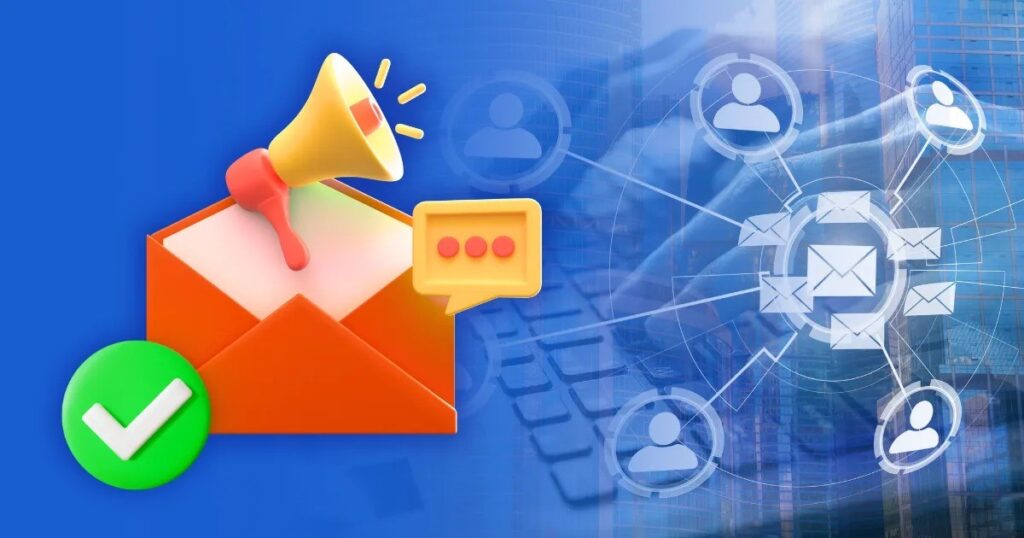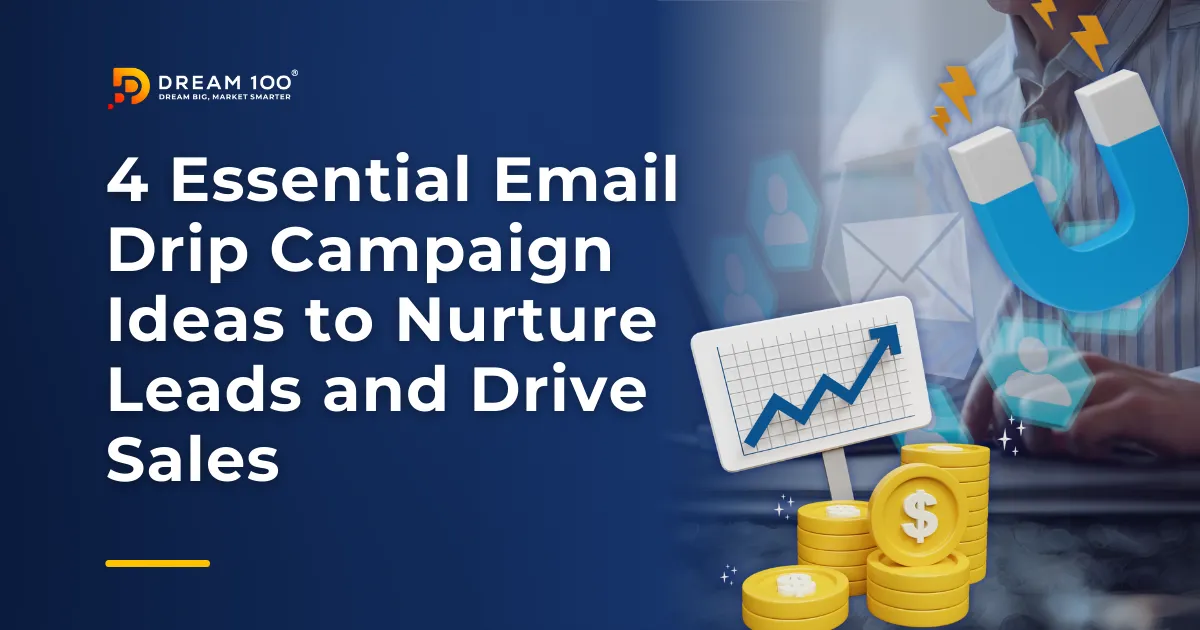Email automation workflow is a game-changer in the realm of digital marketing, enabling businesses to nurture leads and boost conversion rates without constant manual intervention. By optimizing your email marketing automation workflow, you can ensure that your messages reach the right people at the perfect time, increasing the likelihood of turning prospects into loyal customers.
This involves designing and implementing a series of emails that are triggered based on specific user actions or timelines. In this blog, we’ll dive into how you can fine-tune your email automation workflow to maximize efficiency and achieve higher conversion rates. Through actionable steps, you’ll learn to leverage this powerful tool to its fullest potential, making your marketing efforts more effective and results driven.
Understanding the Basics of an Email Automation Workflow

An email automation workflow refers to the systematic process that automates the sending of emails based on predefined triggers and behaviors. It is essential for businesses looking to engage customers effectively without constant manual effort. By implementing an email automation workflow, companies can ensure timely communication, maintain customer interest, and enhance user experience, ultimately leading to improved customer retention and increased sales.
Key Components of a Successful Workflow
To set up a successful email marketing automation workflow, several key components must be in place:
- Trigger Events: These are actions taken by users that initiate the workflow. Common triggers include signing up for a newsletter, downloading a resource, or making a purchase.
- Email Content: This includes the actual messages sent to users. Content should be relevant, engaging, and tailored to the user’s stage in the customer journey.
- Timing and Frequency: Determining the optimal timing and frequency of emails is crucial. Emails should be spaced out enough to avoid spamming but frequent enough to keep the user engaged.
- Segmentation: This involves dividing your audience into different groups based on their behavior, demographics, or engagement level to send more personalized and relevant emails.
- Feedback Loops: Incorporating mechanisms for measuring engagement and feedback helps refine and optimize the email workflow.
Common Objectives and Outcomes
The primary objectives of an email automation workflow include:
- Lead Generation: Capturing the interest of potential customers.
- Lead Nurturing: Providing valuable information to build trust and relationship, gradually moving leads down the sales funnel.
- Customer Retention: Keeping existing customers engaged and interested in your offerings.
- Sales Conversion: Encouraging prospects to make a purchase through targeted and timely offers.
The outcomes of an effective email marketing automation workflow are measurable and significantly positive. Businesses can expect higher engagement rates, improved conversion rates, and a better ROI on their email marketing efforts. By understanding and implementing these basics, companies can set up a robust email marketing system that operates efficiently and drives success.
Designing an Effective Drip Email Campaign Workflow

A drip email campaign workflow is a structured sequence of automated emails that are sent based on specific timelines or user actions. It’s a key component of an email automation workflow designed to deliver information to recipients incrementally, helping businesses keep their audience engaged without overwhelming them. This method is particularly effective for educating new subscribers, nurturing leads, and increasing customer retention through steady communication.
Step-by-Step Guide to Setting Up Your Drip Campaign
To implement a drip email campaign workflow effectively, follow these steps:
- Identify Your Audience and Goals: Define who you are targeting and what you aim to achieve with your campaign. Common goals include welcoming new subscribers, nurturing leads, or re-engaging dormant customers.
- Segment Your Audience: Break your audience into segments based on behaviors, preferences, or demographics to tailor your emails more effectively.
- Design Your Emails: Create engaging and relevant content that addresses the needs and interests of each segment. Include clear calls-to-action (CTAs) to guide recipients towards your desired action.
- Set Trigger Points: Determine what actions or events will trigger each email in the sequence. For example, downloading a white paper might start a series aimed at providing more in-depth information on the topic.
- Schedule and Space Your Emails: Decide on the timing and frequency of your emails. Timing can be crucial, especially when trying to optimize open rates and engagement.
- Test and Tweak: Before full deployment, test your drip campaign with a small group to gather data on its effectiveness and make necessary adjustments.
Tips for Timing and Content Strategies
When designing your drip email campaign workflow, consider these tips:
- Right Timing: Avoid sending too many emails too quickly. Space them out based on the typical decision-making timeline of your audience.
- Content Relevance: Each email should offer value, whether it’s educational content, a personalized recommendation, or an exclusive offer.
- Responsive Design: Ensure your emails are optimized for all devices. A significant portion of emails are opened on mobile devices.
- Progressive Profiling: Use each email as an opportunity to learn more about your subscribers. Include small surveys or interactive content that encourages them to provide more information about their preferences and needs.
By following these guidelines, you can ensure that your drip email campaign workflow is effective and contributes positively to your overall email marketing automation workflow, driving engagement and conversions.
Lead Nurturing Email Workflow: Best Practices

A lead nurturing email marketing workflow is a critical component of any email automation workflow designed to develop relationships with leads at every stage of the sales funnel. This type of workflow involves sending automated emails that provide relevant information and offers, tailored to the needs and behaviors of prospects, guiding them gradually from initial interest to the decision to purchase. Effective lead nurturing helps build trust and credibility, keeping your brand at the forefront of a prospect’s mind.
How to Segment and Target Your Audience Effectively
Effective segmentation and targeting are vital for a successful lead nurturing email workflow. Here’s how to do it:
- Collect Relevant Data: Gather as much information as possible about your leads through sign-up forms, website interactions, and past purchase behavior.
- Create Detailed Personas: Develop personas representing your typical customers. This helps in crafting messages that resonate with different segments.
- Use Behavioral Triggers: Segment your audience based on their actions, such as those who have opened emails consistently but haven’t made a purchase, or those who frequently visit certain pages on your site.
- Prioritize Lead Scoring: Implement a lead scoring system to prioritize leads based on their engagement level and likelihood to convert. This helps in focusing efforts on the most promising prospects.
Examples of Successful Lead Nurturing Emails
Here are some examples of successful emails in a lead nurturing email workflow:
- Educational Content Emails: Send information that solves problems or educates your leads about your product or industry. For example, a B2B company might send whitepapers or case studies relevant to the business of the lead.
- Product Recommendations: Based on past interactions, suggest products that meet the unique needs or interests of the lead. For instance, if a customer looked at laptops on your site, you might send an email featuring a buying guide or comparison chart.
- Re-engagement Emails: Target leads who have not interacted with your brand in a while. These emails might include special offers or messages asking for feedback on why they haven’t purchased.
- Milestone Emails: Celebrate milestones in the customer’s journey. This could be an anniversary of their first purchase or a congratulation message for completing an action, like a course or a setup process.
Implementing these best practices in your lead nurturing email workflow can enhance the effectiveness of your email marketing automation workflow, helping to convert leads into loyal customers more efficiently.
Integration and Automation Tools

When it comes to streamlining your email automation workflow, choosing the right tools and software is crucial. There are numerous options available, each with unique features tailored to different business needs. Popular tools include:
- Mailchimp: Known for its user-friendly interface, it’s ideal for small businesses looking to start with email marketing.
- HubSpot: Offers comprehensive marketing automation capabilities, including email workflows that integrate seamlessly with CRM and sales features.
- ActiveCampaign: Focuses on advanced segmentation and personalized email automation workflows, suitable for businesses aiming to tailor their communications.
- Constant Contact: Great for those new to email marketing, providing simple tools and excellent support.
- Marketo: Best for large enterprises with complex marketing strategies needing a robust, scalable solution.
How to Choose the Right Tool for Your Business Needs
Selecting the right tool for your email automation workflow involves several considerations:
- Ease of Use: Consider how intuitive and user-friendly the platform is. You want something that your team can easily adopt and use effectively.
- Integration Capabilities: Check if the tool integrates well with other systems and platforms you already use, such as CRM systems, e-commerce platforms, or web analytics tools.
- Scalability: Ensure the tool can grow with your business. It should handle increased volumes of emails and contacts without performance issues.
- Features and Functionality: Look for features that match your specific marketing needs. This might include A/B testing, advanced segmentation, or multi-channel marketing capabilities.
- Budget: Be mindful of your budget. Email automation tools can vary significantly in price, from free tiers suitable for small businesses to enterprise-level solutions that require significant investment.
Integrating Your Email Workflow with Other Marketing Tools
For maximum efficiency, your email automation workflow should not exist in isolation. Integrating it with other marketing tools can enhance both the effectiveness and the tracking of your campaigns. Here’s how:
- CRM Integration: Connecting your email tool to a CRM allows you to sync customer data and personalize emails based on detailed customer insights.
- Social Media Tools: Integrate with social media management tools to coordinate campaigns across multiple platforms, enabling a unified approach to your digital marketing.
- Analytics Tools: Linking with analytics tools like Google Analytics helps you track the performance of your email campaigns and measure their impact on your website traffic and conversions.
By carefully selecting and integrating the right tools, you can create an email automation workflow that is not only effective but also works seamlessly with your overall marketing strategy, driving better results and providing deeper insights into your campaigns.
Conclusion
In today’s fast-paced digital world, mastering your email automation workflow is more than a convenience—it’s a necessity. By leveraging the practices and tools discussed, you can transform how you connect with your audience, nurture leads, and ultimately drive conversions. Remember, the journey of optimizing your email automation doesn’t have to be a solo venture. At Dream 100®, we’re committed to helping you harness the full potential of your email marketing strategies with cutting-edge solutions tailored to your unique business needs.
Ready to elevate your email marketing game to new heights? Don’t wait to start seeing the results you deserve. Visit us at Dream 100® Contact Us to learn more and take the first step towards transforming your email campaigns today!


